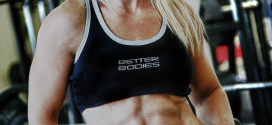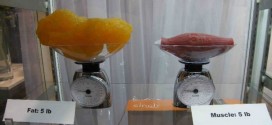Should You Workout When Pregnant?
There is so much conflicting advice about exercising when pregnant, one minute we are told to stop running during pregnancy the next we see pictures of Paula Radcliffe running 100’s of miles a week whilst 5 months pregnant. That’s why we’ve teamed up with celebrity personal trainer Nick Finney, as he shares his expert tips, do’s and don’ts of pre and post natal exercise and nutrition that he’s used to train celebrities such as Sienna Miller.
 Pregnant women who work out regularly have a lower risk of gestational diabetes, pregnancy-induced high blood pressure and excess weight gain, plus fewer aches, more energy and, after delivery, a faster return to their pre-pregnancy shape. What’s more, research shows that the children of exercising moms have lower rates of obesity and diabetes years later. So don’t be afraid to keep exercising and getting all your usual benefits of exercise as well as passing those on to your unborn baby.
Pregnant women who work out regularly have a lower risk of gestational diabetes, pregnancy-induced high blood pressure and excess weight gain, plus fewer aches, more energy and, after delivery, a faster return to their pre-pregnancy shape. What’s more, research shows that the children of exercising moms have lower rates of obesity and diabetes years later. So don’t be afraid to keep exercising and getting all your usual benefits of exercise as well as passing those on to your unborn baby.
Combat common pregnancy symptoms
- Exhaustion: Exercise early in the day, before you feel even more wiped out, and divide your workout into short sessions.
- Nausea: Notice what time of day your nausea hits hardest and avoid exercising then. Also, don’t exercise on an empty stomach. Thirty to 60 minutes before your workout, eat a small portion of oatmeal, or some cashews.
- Swollen feet and ankles: Exercise early in the day, before the swelling is full-blown. Buy athletic shoes a size larger, and if possible, try swimming or the recumbent bike instead of walking.
- Back discomfort: Stretch your lower back with the Cat and Camel stretch. Get down on your hands and knees, wrists directly under your shoulders. Slowly round your back, holding for one breath. Then, arch your back, tilting your pelvis toward the floor. Repeat.
Prenatal vitamins
Extra B vitamins, including folate, are necessary for cell growth and preventing neural tubal defects. The RDA for folate is 400 ug. Folate can be found in whole grain and fortified cereals, fruits and green vegetables but also a good prenatal B vitamin supplement such as essential vitamin b complex will also help to meet your additional dietary needs.
Calcium and vitamin D are also necessary for bone development. An adequate amount every day will conserve maternal bone health while the fetal needs are met. At least 1200 mg per day are recommended and can be found in milk, yogurt, and cheese. An additional calcium supplement may also be necessary if you think you are not getting enough, so perhaps look at complete bones.
Iron is another necessary mineral, as levels may decrease due to the mothers enlarged blood volume. Foods such as liver, oysters, pumpkin seeds, sun dried tomatoes and dried apricots are all good sources of iron, but equally new mums might require a supplement like complete iron from.
Prenatal nutritional concerns
Many expectant mothers are concerned with foods they need to avoid during pregnancy. This list includes raw meats and fish, unpasteurized cheeses and sprouts, fish high in mercury (albacore tuna, mackerel, tile fish, swordfish, and shark), and alcohol. Foods that contain any caffeine and artificial sweetener should be severely limited, and those with saccharin should be avoided.
Expect weight gain
Average weight gain (lbs)
Infant 7 1/2
Placenta 1 1/2
Blood & Fluid Volume 8
Uterus 2
Breasts 2
Amniotic Sac 2
Fat Stores 7
Total 30
Post natal do’s and don’ts
It can be confusing knowing when the best time to start is and what exercise is safe after you have given birth. There is so much conflicting information you can feel lost as to what the actual safe solution is. My opinion on when to begin postnatal exercise is simple; Listen to your body and begin when you feel ready but of course err on the side of caution. Remember that going for a walk is exercise. My recommendation is to begin simply by being aware of drawing in your lower stomach and activating transverse abdominus your core muscles that shrink your stomach size as soon as possible. But if we are looking for cautionary specific guidelines then wait to get the all-clear from your GP at your postnatal check to re-start your exercise routine – approx. 6weeks after the birth, and 10 wks after a C- section. But do not let this stop you beginning basic withdrawal techniques for the stomach, and gentle cardio before then.
DON’T: Overdo it. If your baby has been up all night and you’ve had no sleep, put your exercise session on hold for that day and have a nap or choose a lighter activity instead. You’re more vulnerable to injury when you’re tired.
DON’T: Make do with your old trainers if they don’t provide sufficient support. With the effects of relaxing still present, ankle stability is a must.
DO: Wear a good sports bra. Your breasts will need support during activities and an appropriately fitted bra can help reduce the risks of stretch marks and discomfort. Some arm movements may promote milk flow so pop in some breast pads and remember to feed or express before exercise.
DO: Drink plenty of water before, during and after exercise, especially if you’re breastfeeding.
DO: Exercise your pelvic floor regularly. These muscles have two different roles so must be exercised in two ways. For the supportive role and to keep your insides on the inside, draw in the muscles inside you, as if sucking in your lower stomach toward your spine, and remember to keep breathing! Then lower slowly. Gradually increase the length of hold. This exact draw in and hold can be done whilst doing all other exercises for maximum effect.
DON’T: Opt for running and jumping forms of exercise for the most part in the first 4-6 months. Your ligaments are still softened and stretched from relaxing. This means that the scaffolding supporting your ankles, knees, hips, pelvis and spine are a little weaker than usual so be careful. Your pelvic floor has also been weakened by the weight of your baby and when you run or jump increased pressure is exerted on these muscles which may cause stress incontinence.
DO: Focus on good technique and alignment – go for quality rather than quantity.
DON’T: Do sit-ups and crunches. These exercises are inappropriate and will NOT necessarily flatten your tummy. They are more likely to cause low back ache and may make your tummy stick out more. They will also increase the pressure on your weakened pelvic floor!
DON’T: Lift too heavy just yet, especially avoiding the valsalva manoeuvre where you momentarily brace yourself and hold your breath as if picking up something heavy. This will put too much pressure on your pelvic floor too soon.
DO: Lift light to moderate weights ensuring your tummy muscles are lightly drawn in prior to the first repetition. Exercises based around using your own bodyweight and core muscles are great and ensure moderate adjustable resistance.
DON’T: Push your stretches further to increase flexibility. The lingering effects of relaxing will allow you to stretch further and this may reduce joint stability for the future. Hold static stretches in a comfortably tense position for up to 30 seconds.
DO: Stretch muscles which have shortened and tightened during pregnancy. Front of hip, chest, back, and calf muscles in particular, need to be lengthened to help correct postural changes, and reduce muscular tension.
Post natal nutrition
Try to eat every 2-3 hours as a breastfeeding Mum and every 3-4 hours if you’re not breastfeeding. Snacks are essential either way. Eating more frequently will help to maintain your energy level and keep your metabolism strong and steady. It will also help to ensure that you are getting all of the important nutrients that you need. Try to include 2 components in your snacks: carbohydrates (in the form of whole grains or fruit/vegetables) and protein (animal protein or vegetable protein).
Don’t depend on caffeine
It’s not a good idea though, to drink more than an 8 oz cup of coffee or the equivalent per day- especially if you’re breastfeeding. About 1% of the caffeine that you consume from coffee, tea, colas, chocolate and certain medications shows up in your breast milk. Caffeine is a stimulant is eliminated slower in your baby. This may negatively affect your little one. Caffeine is also dehydrating if over-consumed. This would affect your milk supply and therefore your baby’s nutrition. Enjoy 1 or 2 cups of java a day, but make sure to drink plenty of water to stay well hydrated. But if you’re looking for an alternative ‘pick me up’ to coffee, perhaps try total ginseng since the ginsenosides in the ginseng serve as a potent immune boosting ingredient well as ‘energising’ the body..
 Supplement Judge Unbiased Supplement Reviews – Do they really work??
Supplement Judge Unbiased Supplement Reviews – Do they really work??




